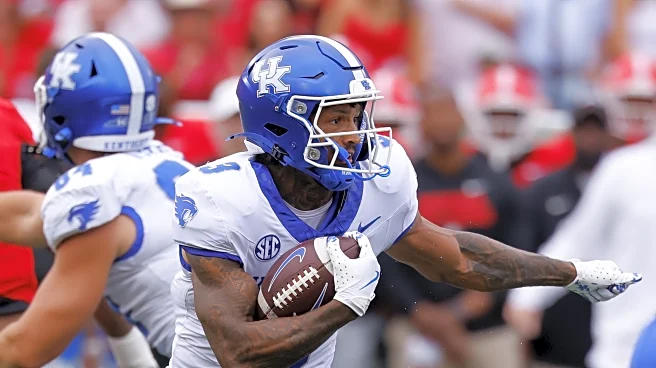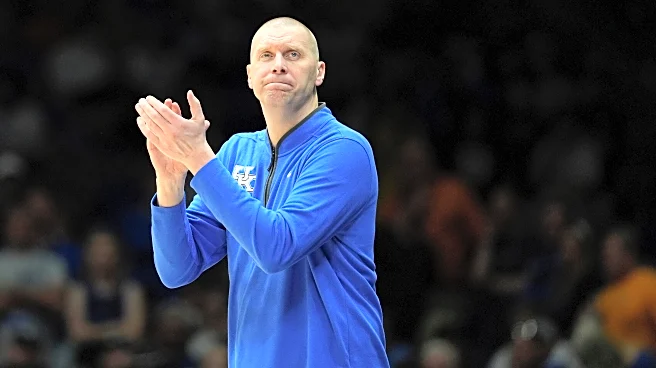What's Happening?
The Breeders' Cup 2025 is set to take place with 14 races scheduled over two days, including the Juvenile race for 2-year-old males. Historically, the winner of the Breeders' Cup Juvenile is often favored
for the Kentucky Derby, but only two horses have achieved victories in both events: Street Sense and Nyquist. Hall of Fame trainer Bob Baffert, who has won both the Juvenile and the Kentucky Derby multiple times, has never done so with the same horse. Last year's Juvenile winner, Citizen Bull, finished 15th in the Kentucky Derby and will compete in the Dirt Mile this year. The Juvenile race is run at 1 1/16 miles, while the Derby is 1 1/4 miles, a distance that often challenges Juvenile winners.
Why It's Important?
The Breeders' Cup Juvenile is a significant event in horse racing, often setting the stage for future stars. However, the transition from Juvenile success to Kentucky Derby victory is rare, highlighting the challenges of maintaining peak performance as horses mature. This underscores the importance of strategic training and the inherent unpredictability in horse racing. Trainers and owners invest heavily in young horses, hoping to identify those with the potential to excel at longer distances. The outcome of the Juvenile can influence betting markets and the reputations of trainers and owners, impacting the broader horse racing industry.
What's Next?
As the Breeders' Cup unfolds, attention will be on the Juvenile race to see if any contenders emerge as strong Kentucky Derby prospects. Trainers like Bob Baffert will continue to evaluate their horses' performances and potential for longer races. The results could influence future breeding and training strategies, as well as the financial stakes involved in horse racing. Stakeholders will watch closely to see if any horse can break the trend and achieve success in both the Juvenile and the Kentucky Derby.
Beyond the Headlines
The rarity of Juvenile winners succeeding in the Kentucky Derby raises questions about the factors that contribute to a horse's development and success. It highlights the complexities of breeding, training, and racing strategies. The industry may need to consider how to better support horses' transitions from early success to sustained performance. This could involve re-evaluating training regimens or breeding practices to enhance endurance and adaptability.













